Reading Strategies for New Words You Don't Know
 By Brenda J. Overturf
By Brenda J. Overturf
How powerful can one word be?
Jacob, a seventh grader, sits staring at a challenging text he has tried to read. He knows the other words in the paragraph but is stuck on a multisyllabic word he has never seen before. Jacob sounds out the word, simply because he has too never heard it, it all the same doesn't make sense.
Finally, he only gives up and moves on. All the same the one word Jacob doesn't know holds the key to comprehending the entire passage. Sound familiar? Kids similar Jacob occupy many middle level classrooms, and they are not necessarily struggling readers.
Deciphering tools are essential to lifelong learning
Vocabulary knowledge is the eye of comprehension and bookish achievement, and it ways way more than just learning words. Don't become me wrong – learning a lot of words is incredibly important. Kids take to larn and understand a multitude of words to read and learn in and out of school.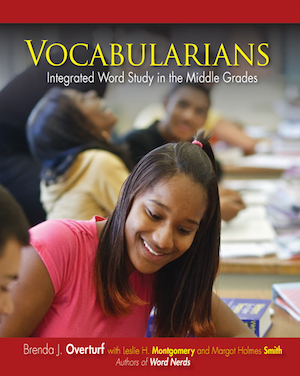
Only nosotros couldn't teach students every word or phrase they might meet in text even if nosotros had time to introduce them inside our tightly packed schedules. Although knowing loftier-utility words and phrases is vital for comprehension, to be lifelong learners kids also need to have strategies at their fingertips to decipher unfamiliar words.
Vocabulary researchers often betoken to iii strategies that learners utilise in order to determine the meanings of unfamiliar words independently (Graves, 2006; 2007):
(1) use of context,
(ii) use of word parts, and
(three) employ of reference materials.
For those teachers implementing the Mutual Core Country Standards, these three strategies make up Language Anchor Standard 4. They can pb students across content areas to understand words in text and make a big difference in comprehension and subject thing learning. If kids don't know how to use discussion-learning strategies, we take to teach them.
Strategy ane: Use of Context
One strategy is that of using sentence or passage-level context to infer the significant of a word or phrase. Although some researchers experience that use of context, which is an "around-the-word" strategy, is non ever reliable (that is, the context may non be rich enough to help students actually understand the meaning of a word or may lead them to a wrong conclusion), others take institute that most new words are learned from context.
Also, increasingly, standardized assessments require students to read a passage with an underlined word, answer a multiple choice question with four possible definitions of the word, and then answer a second related multiple pick question where the object is to provide show from the passage that supports the chosen definition.
Students may struggle with context
In a vocabulary test question, context equals testify. But deciding what constitutes context is not ever easy for students. When Trish, a seventh grade English arts teacher, began asking her students to point the parts of a passage that provided context clues to an underlined discussion, she was astonished.
As Trish put it, "I was shocked! This is the hardest affair in the world for them to practise. The clue is blatantly there, and they don't run across information technology."
Other teachers feel that some students may non even understand the term context. I sixth form teacher had this to say: "It's almost like the phrase context clues is something they have just never heard earlier. We accept to teach them how to look for clues and then they can figure out word meanings."
One way teachers have institute to emphasize context is to introduce selected vocabulary within cloze sentences – a sentence with a bare where the word should go.
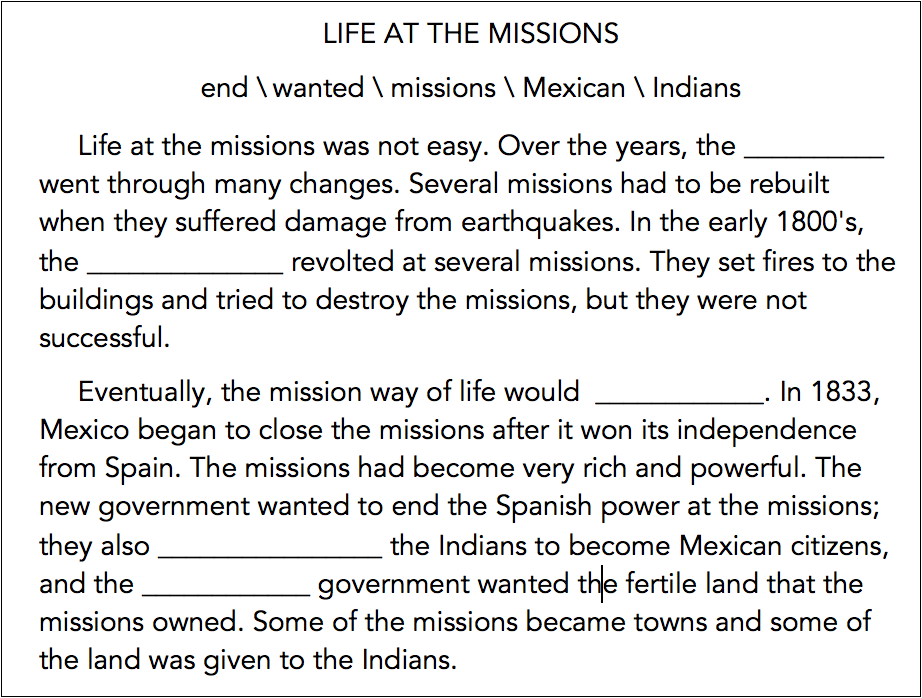 (Thanks to Larry Ferlazzo)
(Thanks to Larry Ferlazzo)
Tonie, an English linguistic communication arts teacher, pulled sentences from a short story that students were preparing to read and wrote the sentences on paper strips which she fastened to her bulletin board. She too wrote the seven vocabulary words she planned to introduce on give-and-take cards.
After introducing the words, Tonie asked students to work in groups to determine which word went into a particular blank. They then had to justify their answers past describing the context clues that helped them make a conclusion. This not only helped them go more familiar with important vocabulary and how to use context, it also served as a predictive activity that piqued student interest but did not reveal too much of the story.

A Social Studies case using slides
In social studies, Stephen introduced the word interdependence, a powerful concept word for his seventh graders. To brainstorm, he created a serial of v simple PowerPoint slides. The starting time slide contained a sentence with a bare where the give-and-take should go. The next three slides independent clues to lead students to the give-and-take interdependence.
For example, Stephen displayed a diagram of a car with parts fabricated in several different countries, a quote from The Lion King about the circle of life, and the dictionary definition of interdependence. With each slide, he engaged students in a lively discussion almost the information on the slide and what the word might exist.
On the last slide, Stephen showed students the judgement with the discussion included. By asking them to predict the word that would go in the blank and think about clues along the way, he was also teaching his students in a way that guaranteed they would think the word every bit they learned social studies content.
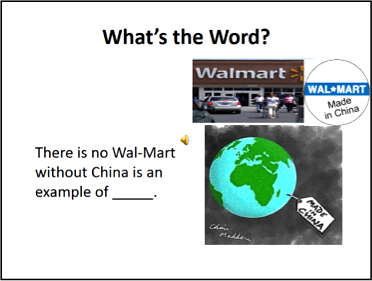 Strategy ii: Utilize of Word Parts
Strategy ii: Utilize of Word Parts
Imagine a fifth form grade where a instructor can hold upwardly a card with a discussion like abolitionist written on it, and within a infinitesimal modest groups of students take figured out the pregnant of the give-and-take—without the teacher uttering 1 sound.
This is non an imaginary classroom. Leslie Montgomery, who teaches in a high poverty public elementary schoolhouse, regularly witnesses this phenomenon. Her students take learned the power of using the meanings of prefixes, roots, and suffixes (peculiarly common Greek and Latin roots) to figure out the meanings of words.
As they talk through their reasoning, information technology is clear her students are developing "morphological sensation," or agreement virtually the structure and origin of words. This skill tin can often seem like magic to kids, simply is really sophisticated vocabulary knowledge that they demand in guild to acquire at higher levels.
Going down to the roots
Using the meanings of discussion parts to make up one's mind the significant of a multisyllabic word is an "in-word" strategy that tin can open the doors to thousands of new words. More than 60 per centum of words in an English lexicon stem from Greek and Latin roots, and in science and engineering science, it is more than like 90 percent (Moats, 2000).
Most researchers agree that middle level students need to develop morphological awareness to comprehend challenging texts across the curriculum. Withal research shows that many students attain middle school without this crucial skill (Graves, 2006).
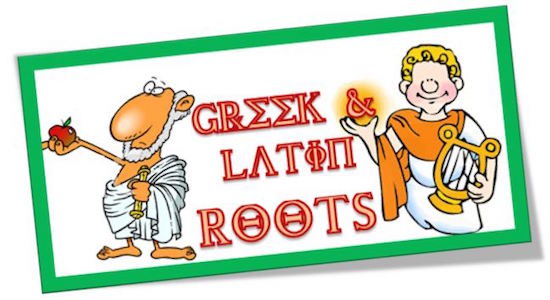 As well see:
As well see:
Our Super Drove of Vocabulary Articles
When I asked a grouping of middle school teachers nigh their students' employ of word parts, most were convinced that their students did not know the meanings of the simplest affixes like un- and im- (non), much less Greek and Latin roots like graph (to write), therm (heat), or port (to carry). The operation of their students did not exercise much to persuade them otherwise.
Tonie taught her 7th grade students that there is a small list of affixes that can be constitute in most words with prefixes or suffixes. This knowledge was powerful for her students and made the chore of become morphologically aware a lot easier. Tonie besides emphasized morphological knowledge as students read passages in her grade.
For case, Tonie selected the give-and-take undisciplined, a give-and-take that was of import for comprehension in the Pandora myth her students read and discussed. She and so invited kids to infer the definition of the word based on the meanings of the parts. An blithe chat ensued as students used both context and word parts to make up one's mind the meaning of the give-and-take as it was used in the myth.
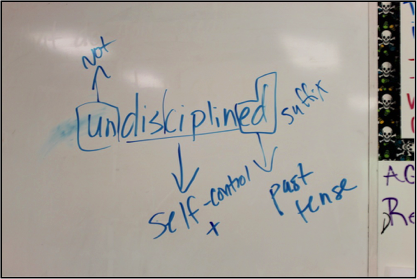
Content area teachers have too establish that teaching students the meanings of common word parts can help students learn more than. Stephen taught his seventh graders that the suffix -ism indicates social, political, or religious beliefs or ways of behaving.
Because of the knowledge of this suffix and other word parts, his students were excited to predict and discuss the meanings of words similar monotheism, polytheism, and colonialism–important words for the social studies unit of study.
Strategy iii: Utilise of Reference Materials
The tertiary give-and-take-learning strategy I want to suggest is that of using reference materials, which is a "beyond-the-word" technique.
Of course we demand to teach students to use dictionaries, glossaries, and thesauruses to verify an inference and cheque the meaning of a discussion. But nosotros can also teach students how to expand vocabulary into semantic networks past finding synonyms and antonyms in these reference materials as part of their word exploration.
For case, Susan invited her 8th graders to use a diverseness of digital sources to explore selected words. Students were astounded to observe numerous definitions, synonyms, and antonyms for these words in dissimilar sources, leading to a natural discussion of multiple meanings and the context in which the word was introduced.
Because center school students often just cull the shortest definition for a word, this type of investigation emphasized the importance of using multiple sources and considering the most authentic meaning in the context of the text.
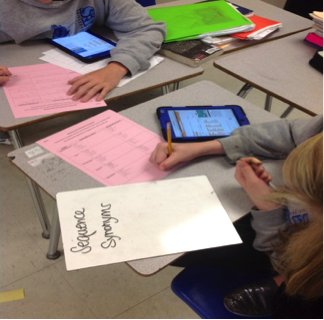
Teaching kids to employ word-learning strategies
Effective vocabulary instruction is not a solemn and silent try! Each instructor I have described to a higher place, fifty-fifty though they piece of work with students in very different schools and in varied subject area areas, has discovered that a student-centered classroom is the key to effective vocabulary instruction and learning.
Nosotros want heart school students to be excited nigh new words and how to effigy them out in text. We desire them to become vocabularians, who anticipate learning new words instead of shutting downward when they see them.
When students discuss vocabulary knowledge and appoint in active vocabulary exploration, they too larn take an academic hazard with words. That'southward incredibly of import now and in the future.
References
• Graves, M. (2006). The vocabulary book. New York: Teachers College Press.
• Graves, M. (2007). Vocabulary instruction in the middle grades. Voices in the Middle 15(one): 13-xix.
• Moats, L. C. (2000). From speech to print: Linguistic communication essentials for teachers. Baltimore: Paul H. Brooks Publishing.
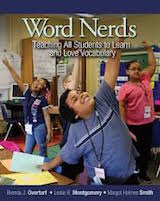
For more than ideas, visit MiddleWeb reviews of Give-and-take Nerds and Vocabularians.
Dr. Brenda J. Overturf was an award-winning classroom instructor for 18 years in Kentucky public schools before serving six years every bit the Jefferson Canton Public Schools (Louisville, KY) Commune Reading Coordinator. In 2005, Overturf joined the faculty of the University of Louisville to pb the graduate program in Reading Pedagogy. She has been an elected fellow member of the ILA Lath of Directors (2009-2012) and is now a full-time literacy consultant. She is the co-author of Word Nerds and the new Stenhouse book, Vocabularians.
Source: https://www.middleweb.com/25300/3-vocabulary-strategies-help-students-decipher/
0 Response to "Reading Strategies for New Words You Don't Know"
Postar um comentário